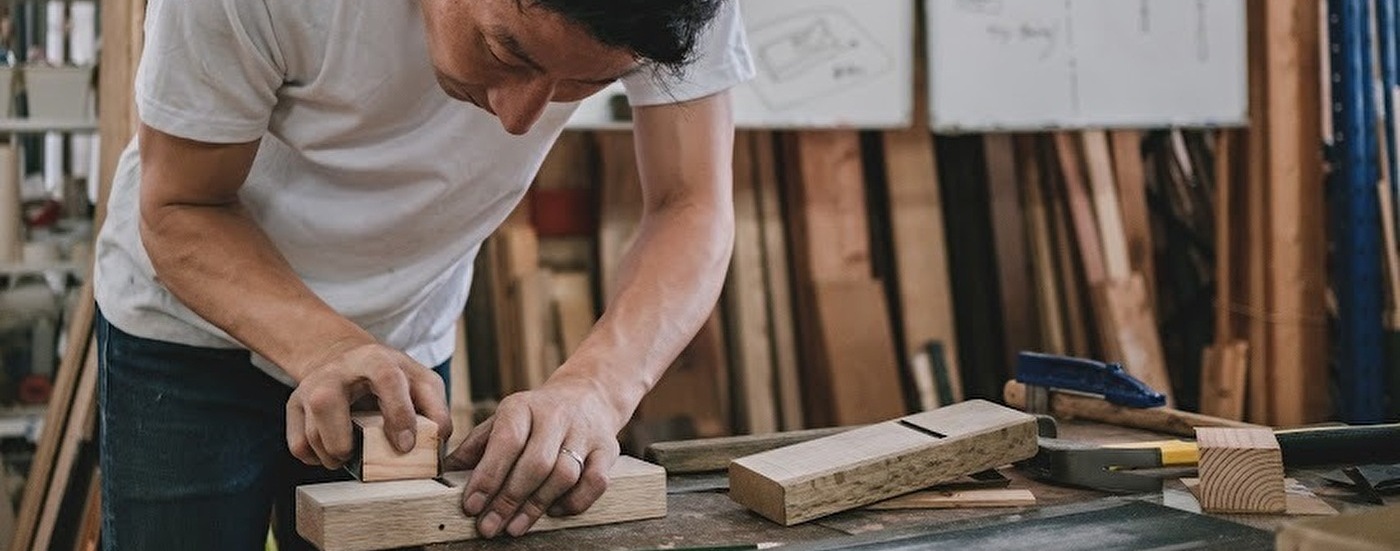Caution “Kiura is not exposed to the public” The properties of the members of logs differ depending on where they are cut out. For example, when the board dries, the Kiura(heart-side) protrudes. If you do not know this property and
it is still the human eye that is most reliable.
The act of checking with the human eye whether two lines (ink and ink, surface of the ruler and surface of the ruler) are parallel is called “niramu” (gaze). We place our trust not in the ruler itself, but in
The woodworking technique [Kigoroshi]
The woodworking technique of tapping and compressing the tenon when making a joint is called kigoroshi. Make a tenon that is a little larger than Mortise, do Kigoroshi, and then assemble it. It is important to use the rounded surface
Look at the nature of this tree and use it in the right place.
The sawn timber is straight at that time, but it always bends over time. We call it the nature of wood. When choosing a tree, look at the nature of this tree and use it in the right place. To
Thank you for the blessings of nature and pray for the safety of the construction work.
The felling of the trees to build the Suikoushya school building has finally begun! Before starting to cut down the trees, we first greet the god of the trees and the god of the mountains. Select one main tree and
Sewari and Umeki technique
In Japan,Wood with the pith(center of the wood) is commonly used.But with these materials, it is very easy for cracks to occur on the surface as it dries. To reduce the chances of cracks occurring on the surface,a line is
Joints are kind of “joining hands” or “holding hands” between woods.
Joints are a processing technique that aims to unite wood with wood. It is easy to understand if you think of it as a kind of “joining hands” or “holding hands” between woods. We are creating online learning materials where
Kyorogumi and Oriokigumi
Kyorogumi; a shed structure in which long beams are placed on top of pillars and short beams are placed on top of the long beams, allowing short beams to be placed where there are no pillars. Although structurally inferior, it
Use of integrated materials
A board has a front and back. The inside of the annual ring is called the back of the wood, and the outside of the annual ring is called the front of the wood. When a board dries, the front
the kamebara (亀腹), or turtle belly : A construction method of building foundation
A Guide to Kyoto’s Wooden and Traditional Architecture A construction method of building foundation that developed during the time of Japanese Style was the kamebara (亀腹), or turtle belly. The ground is raised and the edges are round, and finished
